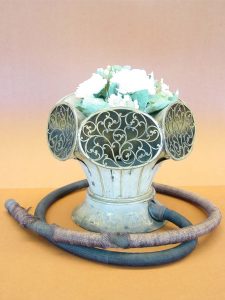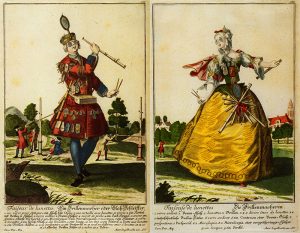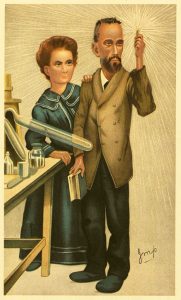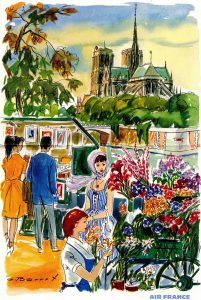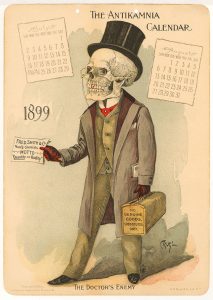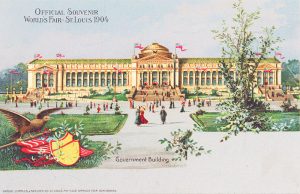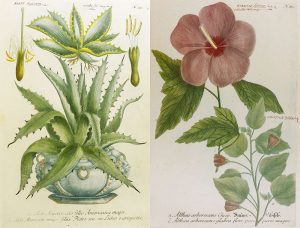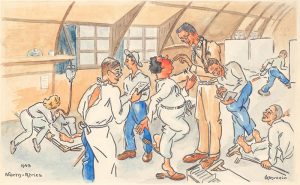As part of our ongoing effort to bring our collections to you virtually as we all practice social distancing, we’ve created a series of online puzzles featuring images from Becker Library’s archival and rare book collections. See the images and links to their puzzles below.
Helpful tips:
- Select your puzzle from the options below – click the link below the image to open the puzzle.
- Before selecting “ok” to start working on your puzzle, click on the grid icon to choose the number of pieces in the puzzle. All puzzles are 60 pieces by default.
- Before selecting “ok” to start your puzzle, select the rotating arrow icon to rotate your puzzle pieces randomly. By default, all puzzle pieces are in the correct orientation unless you choose to rotate them.
- Select the image icon at the top of the page to view a reference image of the puzzle, or click on the images below to enlarge for reference.
Enjoy!
Puzzle #1: Centerpiece sound receptor, c. 1802
This hearing device, made by the F. C. Rein Company in the early 1800s, was designed to be used as an ornate centerpiece at a formal dining table. The center of the device is hollow to allow for flowers or fruit to be arranged within. Sounds from around the table are funneled into the six openings – each covered in gilded, scrolled grillwork – and then are conveyed by a long silk-covered heavy black tube to the hearing impaired diner, and the tube camouflaged by napkins or a table runner. This hearing device is part of our Central Institute for the Deaf-Max A. Goldstein Historic Devices for Hearing Collection.
Puzzle #2: Faiseur des lunettes. Ein Brillenmacher oder Glass-Schleiffer (Translation: A Glasses Maker)
These two copperplate engravings are plate number 153 and plate number 154 from Martin Engelbrecht’s Assemblage nouveau des manouvries habilles, published at Augsburg circa 1730. These prints are hand-colored, and represent Print 2 and Print 3 of our Bernard Becker Prints and Artifacts collection.
Puzzle #3: Pharmaceutical trade card
This trade card comes from our Pharmarceutical Advertisement Cards Collection featuring Henry L. Adams’ Pharmacy, Auburn, New York. The slogan on the card reads, “For a fine line of Holiday Goods, Drugs, Medicines, and Toilet Articles, Go to Henry L. Adams’, 65 State Street. Auburn, N.Y.”
Puzzle #4: Caricature of Pierre Curie and Marie Sklodowska Curie
This caricature comes from our Petrolager Laboratories Collection, which features a series of nine illustrations of famous scientific figures. The initials “JMP” are for the artist of this piece by Julius Mender Price.
Puzzle #5: Cover illustration on a 1964 Air France brochure
This colorful Paris scene found its way into one of our Jewish Hospital Auxiliary scrapbooks, part of our Jewish Hospital of St. Louis Collection.
Puzzle #6: July/August page of the 1889 Antikamnia calendar
This illustration is from the July/August page of the 1889 Antikamnia calendar. The artist of this piece, Louis Crusius (1862-1898), was a St. Louis pharmacist and physician who supplemented his income by creating humorous drawings for medical publications. His most famous illustrations can be found in a series of calendar advertisements for the Antikamnia Headache Powders Company, which can be found in our Louis Crusius Artifact Collection.
Puzzle #7: Official souvenir postcard of the St. Louis World’s Fair featuring the Government Building.
This official souvenir postcard of the St. Louis World’s Fair featuring the Government Building comes from our August Carl Schulenburg Collection. Dr. Schulenburg was a South African and 1906 graduate of the Washington University School of Medicine who picked up this souvenir while attending medical school.
Puzzle #8: Caricature by George Cruikshank
A framed print of this caricature by George Cruikshank (1792-1878) hangs in our reading room. Our collection of George Cruikshank Prints was given to us by the library’s namesake, Dr. Bernard Becker.
Puzzle #9: Bernard Becker Medical Library
Missing campus? Here’s Becker Medical Library building, as seen on a sunny autumn day.
Puzzle #10: Aloe and Hibiscus
Plate 42 (Aloe) and Plate 80 (Hibiscus) from Johann Wilhelm Weinmann’s Phytanthoza Iconographia, published in four volumes between 1737 and 1745. These hand-colored colored mezzotints are some of the most beautiful botanical works in the Becker Library’s rare book collections, depicting a wide range of fruits, vegetables, flowers, and herbs.
Puzzle #11: Splendor Solis
These two hand-colored woodcut illustrations come from Salmon Trismosin’s Splendor Solis, published at Rorschach am Bodensee in 1598. Page 15 (left side) depicts the chemical wedding of the sun and moon, and Page 22 (right side) features the resurrection from the swamp.
Puzzle #12: Dr. Benjamin H. Charles examining patients, 1943.
The artist of this watercolor illustration, Walter Kohnlein, was a German prisoner of war during World War II who was undergoing treatment at the 21st General Hospital located in Bou Hanifia, Algeria. The 21st General Hospital, staffed largely by Washington University and Barnes Hospital physicians and nurses, admitted over 2,000 patients from the time it opened in late April 1943 until the unit left North Africa seven months later. This piece, and others by Walter Kohnlein, are found in the Benjamin H. Charles Collection.

